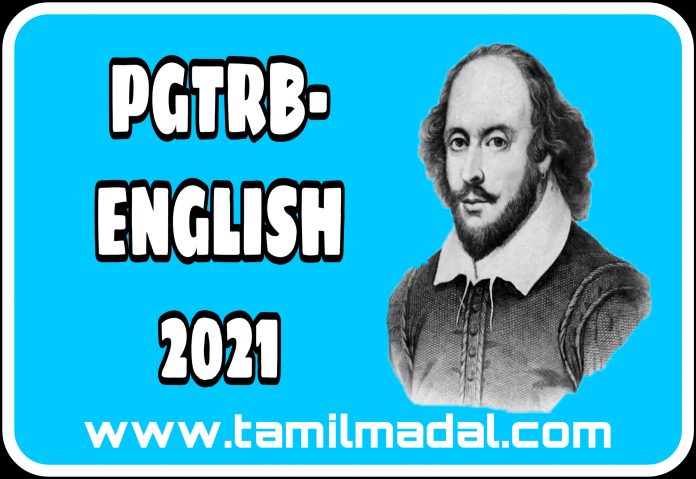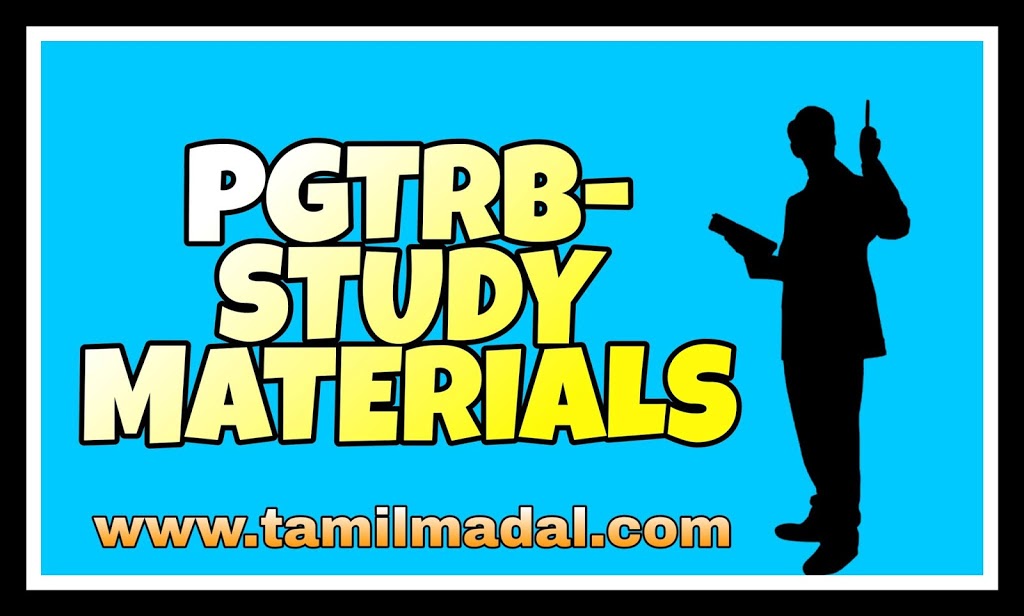
PG-TRB-English-Multiple Choice Questions – cell 9994098972
- Who is the author of Raj?
(a) Geeta Mehta
(b) Rama Mehta
(c) Shobha De
(d) Nargis Dalai - Dominique Lapierre wrote an appealing ac¬count of the sordid squalor of an Indian city. Identify the city.
(a) Calcutta
(b) Bombay
(c) Udaipur
(d) Delhi - Who is the author of following poems?
“The Gift of India”, “Bangle-seller”,
“The Anthem of Love”, “Palanquin Bearers”
(a) Kamala Das
(b) Sarojini Naidu
(c) Toru Dutt
(d) Nissim Ezekiel - Who wrote the hard-hitting poem “Sita
Speak” indicating the society for the injustice meted out to women down the ages
(a) Bina Agarwal
(b) Kamala Das
(c) P. Lai
(d) Sarojini Naidu - In which of the following poems of Ezekiel do we get a moving picture of a mother’s suffering ?
(a) ‘The Couple’
(b) ‘Night of the Scorpion’
(c) ‘The Visitor’
(d) ‘Philosophy’ - Who is the author of Two Virgins?
(a) Kamala Markandaya
(b) Kamala Das
(c) Anita Desai
(d) Shastri Deshpande - Name the Indo-English novelist who wrote A Suitable Boy.
(a) Vikram Seth
(b) Amitav Ghose
(c) Upamanyu Chatterjee
(d) Anita Desai - Two Indian writers living abroad created furor – one was Vikram Seth who got an unprec¬edented amount as an advance for his novel, the other who came under ‘fatwa’, for one of his controversial novels, issued by Muslim countries, was
(a) Amitav Ghose
(b) Bharati Mukherjee
(c) Anita Desai
(d) Salman Rushdie - Name Salman Rushdie’s latest Novel.
(a) The Moor’s Last Sigh
(b) Fury
(c) The Ground beneath Her Feet
(d) Satanic Verses - Of the following novels one does not portray the Gandhian Age and the impact of Gandhi. Which one?
(a) K.A. Abbas’s Inquilab
(b) Venu Chitale’s In Transit
(c) R.K. Narayan’s The Dark Room
(d) K. Nagarajan’s Chronicles of Kedaram - Who is the author of the following books: The Foreigner, The Apprentice, The Last Labyrinth, The City and the River?
(a) Ruth P. Jhabvala
(b) Amitav Ghose
(c) Dom Moraes
(d) Arun Joshi - Whose collections of poems are these: A Time to Change, Sixty Poems, The Third, The Unfinished Man?
(a) P. Lai
(b) Nissim Ezekiel
(c) Kamala Das
(d) Bina Aggarwal - Listed below are the works of Bhabani Bhattacharya of which only one is his col¬lection of short stories. Identify it.
(a) So Many Hungers
(b) A Dream in Hawaii
(c) Sea Hawk
(d) Shadow from Ladakh - Baumgartner’s Bombay is a novel about a German Jew who remains an outsider all his life, in his country because he is a Jew and in India, where he is a firangi. Who wrote this moving novel?
(a) Vikram Seth
(c) The Grotom: 15px; margin-top: 15px; outline: 0px; padding: 0px; text-align: -webkit-auto;”> (b) Anita Desai
(c) Nayantara Sehgal
(d) Ruth P. Jhabvala - In which novel does R.K. Narayan focus on family planning?
(a) The Guide
(b) Mr. Sampath
(c) Bachelor of Arts
(d) The Painter of Signs - In the Guide we come across a dancer. What is her name?
(a) Daisy
(b) Bharati
(c) Rosie
(d) Savitri - Who wrote these lines?
“Woman is the earth, air, ether, sound; woman is the microcosm of the mind “?
(a) Raja Rao
(b) R.K. Narayan
(c) Kamala Markandaya
(d) Kamala Das - Arthur Symons wrote about this person, “All the life of the tiny figure seemed to concen¬trate itself in the eyes: they turned towards beauty as the sunflower turns towards the sun.” Who is the person referred to?
(a) Toru Dutt
(b) Aru Dutt
(c) Sarojini Naidu
(d) Rabindra Nath Tagore - H.A.L. Fisher wrote about this person,”…. this child of the green valley of the Ganges has by sheer force of native genius earned for herself the right to be enrolled in the great fellowship of English poets.” Who is the poet?
(a) Sarojini Naidu
(b) Toru Dutt
(c) Michael Madhusudan
(d) Manmohan Ghose - An Indo-English poet once remarked that his disciplines (i.e., linguistics and anthropol¬ogy) and his education give him his “Outer” form, whereas his Indian origin, first thirty years in India and knowledge of Kannada and Tamil give him his “inner” form. Who said this?
(a) A.K. Ramanujan
(b) Kamala Das
(c) Gieve Patel
(d) Raja Gopal Parthasarathy - Who wrote Jejurithe Commonwealth Poetry Prize winner work?
(a) Shiv K. Kumar
(b) Arun Kolatkar
(c) Keki N. Daruwala
(d) Jayant Mahapatra - In which of Anita Desai’s novel an insane wife kills her husband?
(a) Voices in The City
(b) In Custody
(c) Cry, The Peacock
(d) Baumgartner’s Bombay - In which novel does the hero sing the re¬frain?
“This is the machine age, sons
This is the machine age
We are the men who will master it”?
(a) The Big Heart
(b) The Sword and The Sickle
(c) Two Leaves and a Bud
(d) The Road - Who was the first recipient of the Sahitya Academi Award for English literature?
(a) Mulk Raj Anand
(b) Nayantara Sehgal
(c) R.K. Narayan
(d) Raja Rao - Following novels except one, describe the condition of Westners living in India. Mark the one which does not.
(a) Heat and Dust
(b) The Princess
(c) Coffer Dam
(d) A Passage to India - Which of the following novels focuses on the question of rape?
(a) The Bending Vine
(b) Voices in The City
(c) Some Inner Fury
(d) A Time to Be Happy - Who is the author of the following novels: A Bend in The Ganges, The Princes, Dis¬tant Drums, Devil’s Wind, A Combat of Shadows?
(a) Mulk Raj Anand
(b) Bhabani Bhattacharya
(c) Manohar Malgaonkar
(d) Salman Rushdie - Who wrote “Our Casuarina Tree” a splendid Keatsian poem?
(a) Toru Dutt
(b) Romesh Chander Dutt
(c) Swami Vivekanand
(d) Sri Aurobindo - To whom do we assign following works – The Lake of Palms, A History of Civilization of Ancient India, The Slave-Girl of Agra?
(a) Manmohan Ghose
(b) Romesh Chander Dutt
(c) Bankim Chandra Chatterjee
(d) Sharat Chandra - Which one of the following is a collection of Anita Desai’s short stories?
(a) Voices in the City
(b) Games at Twilight
(c) Village by the Sea
(d) Cry, the Peacock - Browning’s The Ring and the Book is a long poem having about 21,000 lines, but Aurobindo’s Savitri is longer. How many lines does the epic contain?
(a) 24,000 (b) 21,500
(c) 30,000 (d) 22,000 - Toru Dutt, Romesh Chander Dutt and Aurobindo, all wrote on one common theme taken out from the Mahabharata. Identify the story which the tree found irresistible.
(a) Kama and Kunti
(b) Nal-Damyanti
(c) Savitri
(d) Gandhari - Who of the following was highly influenced by French Romanticism, French language and literature?
(a) Romesh Chander Dutt
(b) Michael Madhusudan Dutt
(c) Toru Dutt
(d) Govind Dutt - About an Indian poet writing in English, a critic, George Sampson says that a reader of his poems “Would readily take them as the work of an English poet trained in the classical tradition.” An Indian critic feels that his poetry has no imagery or sentiment that can be termed as Indian. Who was this poet?
(a) Michael Madhusudan Dutt
(b) Romesh Chander Dutt
(c) Aurobindo Ghose
(d) Manmohan Ghose - The Fakir ofJhungheera was written by one of the first Indo-Anglian poets. The poem is often hailed as a “Competent narrative verse with Byronic echoes.” Identify the writer.
(a) Toru Dutt
(b) Henry Derozio
(c) Michael Madhusudan Dutt
(d) Hasan Ali - He was the first Indian poet to have pub¬lished a regular volume of English verse. He also edited an English Weekly The Hindu Intelligence. Name him.
(a) Michael Madhusudan Dutt
(b) Mohan Lai
(c) Romesh Chander Dutt
(d) Kashiprasad Ghose - Paying a tribute to a Bengali poet who wrote in English also, Sri Aurobindo said, “The God himself took up thy pen and wrote.” Who was he?
(a) Michael Madhusudan Dutt
(b) Henry Derozio
(c) Romesh Chander Dutt
(d) Kashiprasad Ghose - One of the following works is written by Michael Madhusudan Dutt. Identify which one?
(a) The Shair and Other Poems
(b) The Captive Ladie
(c) Bianca
(d) Lays of Ancient India - Name the poet of “Kali, the Mother.”
(a) Swami Vivekanand
(b) Subramaniam Bharathi
(c) Swami Ramakrishna Paramhans
(d) Sri Aurobindo - He is a Sahitya Akademi Award Winner and he loves to write for children. Who is he?
(a) R. K. Narayan
(b) Manohar Malgaonkar
(c) Ruskin Bond
(d) Upamanyu Chatterjee - Whose autobiography is entitled My Father’s Son?
(a) Dom Moraes
(b) Frank Moraes
(c) Nirad Chaudhury
(d) VS. Naipaul
- Mulk Raj Anand, about one of his female characters says, “Gauri is my tribute to Indian womanhood.” In which novel does Gauri appear?
(a) The Road
(b) The Old Woman and The Cow
(c) Untouchable
(d) The Sword and The Sickle - Read the following passage and identify the novel and its author: “Lago, I am as meek as Moses, but I have just heard that you have been mishandled by that Bhatta Govinda. Whip me, ye devils! Roast me in sulphur! Gall, worse than gall! A rascally Yea-for-smooth knave! Three Judases, each one thrice worse than Judas! Falstaff speak¬ing. I am as subject to heat as butter.”
(a) In Custody by Anita Desai
(b) Midnight’s Children by Salman Rushdie
(c) All About H. Hatter by G.V. Desani
(d) Vermillion Boat by Sudhir Ghosh - Name the author who has been described by a critic as an “outsider inside.”
(a) Anita Desai
(b) Salman Rushdie
(c) Nirad C. Chaudhary
(d) Ruth Jhabvala - Following novels, except one, describes the condition of Indians settled abroad. Mark the one which does not.
(a) The Nowhere Man
(b) Bye-Bye, Blackbird
(c) The Serpent And The Rope
(d) The Guide - The Angel of Misfortune is a poem of about 5000 lines, written by Nagesh Vishwanath Pai. Whose story is narrated in this book?
(a) Saturn, the Dark Angel
(b) King Arthur of the Holy Grail
(c) King Vikramaditya
(d) Kamadeva - Name the author of The Gardener, The Fu¬gitive, Chitra, Sacrifice, The Post Office.
(a) Rabindra Nath Tagore
(b) Bankim Chandra
(c) Aurobindo Ghose
(d) Romesh Chander Dutt - Name the two prizes, one in literature and another in History, awarded to young Aurobindo while studying in England.
(a) Pulitzer Prizes in Literature and Bedford Prize in History
(b) Bookers in Literature and Butterworth in History
(c) Butterworth in Literature and Bedford in History - Name Sarojini Naidu’s last collection of poems.
(a) The Broken Wing
(b) The Golden Threshold
(c) The Bird of Time
(d) The Temple - What is the full title of Aurobindo’s Savitri?
(a) Savitri – An Epic
(b) Savitri
(c) Savitri – A Legend and a Symbol
(d) Savitri – A Poem in Three Parts - Who wrote Murugan, The Tiller and Kandan, the Patriot, Jatadharan and The Next Rung?
(a) K.S. Venkataramani
(b) ShankerRam
(c) Humayun Kabir
(d) K. Subba Rao - The Devil’s Wind depicts the events of our First War of Independence (1857 mutiny). Who is the author of this novel?
(a) Shanker Ram
(b) Manohar Malgaonkar
(c) R.K. Narayan
(d) Sasthi Brata - Which novel highlights the Bengal famine?
(a) So Many Hungers
(b) A Handful of Rice
(c) A Time to be Happy
(d) Athawar House - Who wrote Ilion?
(a) Virgil
(b) Aurobindo
(c) Homer
(d) Rabindra Nath Tagore - Wordsworth wrote a sonnet on :
(a) Sidney
(b) Shakespeare
(c) Ben Jonson
(d) Milton - In Dickens’s novel, A Tale of Two Cities, the two cities referred to are –
(a) London and Paris
(b) London and Athens
(c) Paris and Berlin
(d) Paris and Rome - Mathew Arnold’s Culture and Anarchy deals with –
(a) Ethics
(b) Religion
(c) Civilization
(d) Theology - In Keats’s Lamia, Lamia was a –
(a) A fairy
(b) A nymph
(c) An enchantress
(d) A serpent-woman - Who called the 18th century the age of Prose and Reason ?
(a) Coleridge
(b) Mathew Arnold
(c) Dr. Johnson
(d) William Hazlitt - Who has published his essays under the title ‘The Round Table’ ?
(a) Thomas Carlyle
(b) William Hazlitt
(c) S. T. Cleridge
(d) Thomas De Quincey - What is meant by ‘Denouement’ ?
(a) The ending of a romance
(b) The ending of a comedy
(c) The ending of a tragedy
(d) The ending of a Farce




